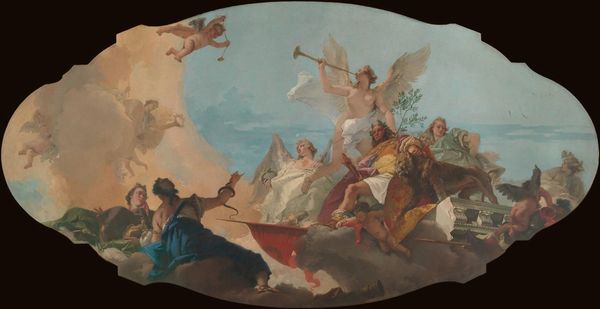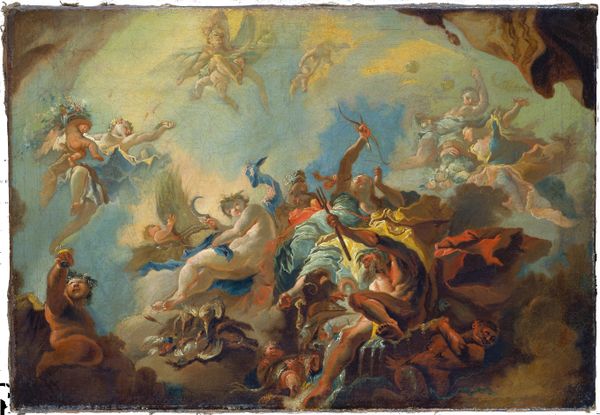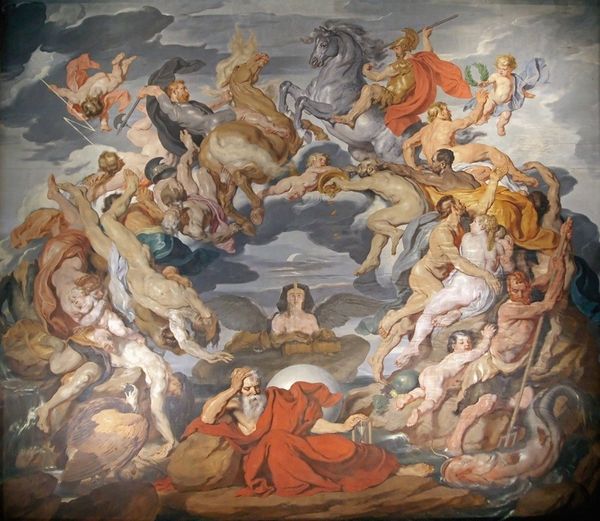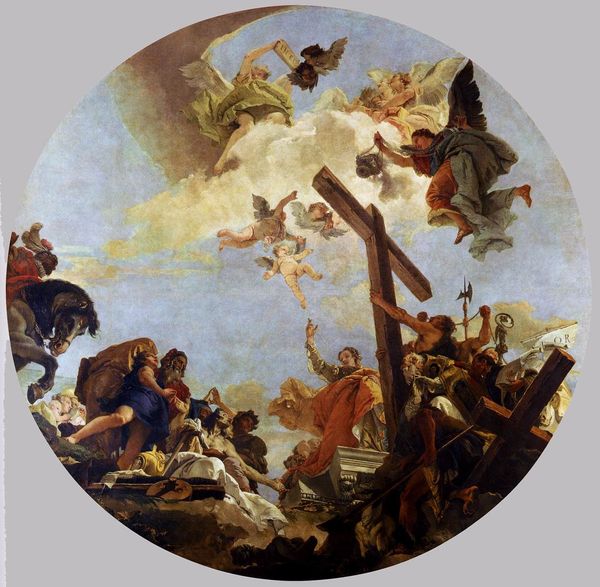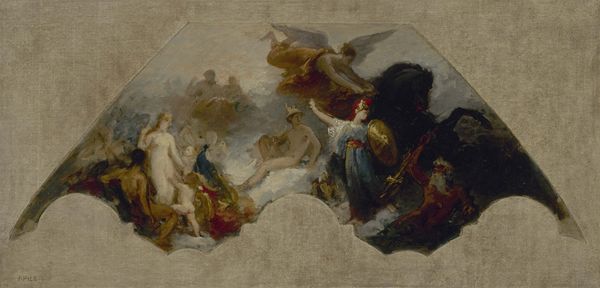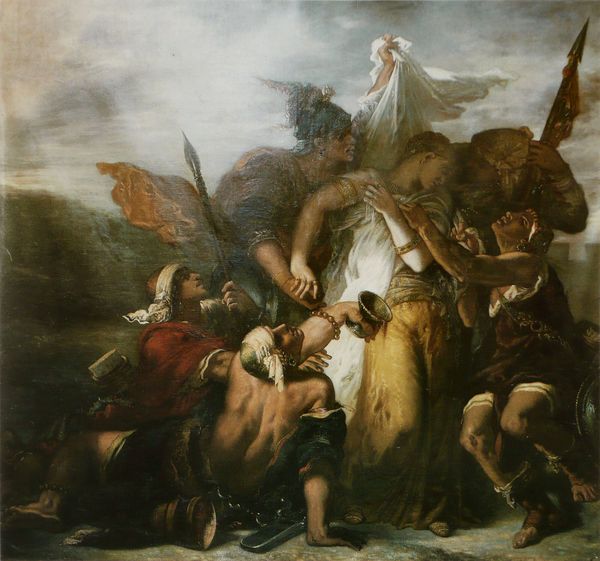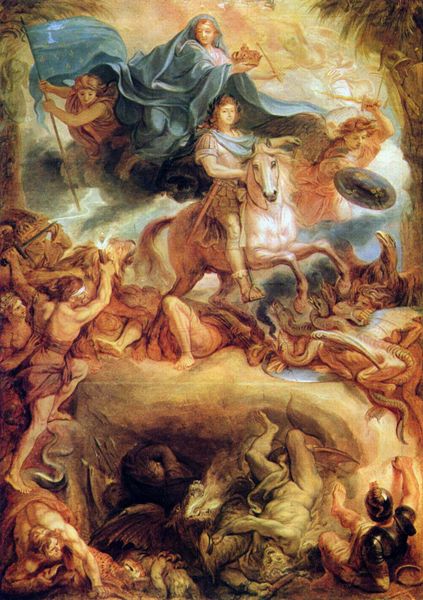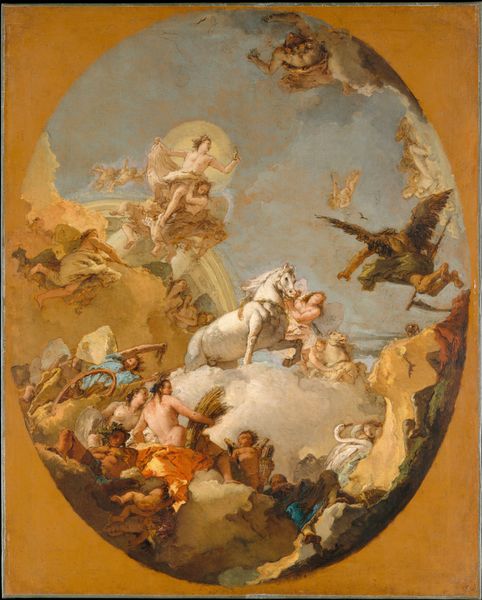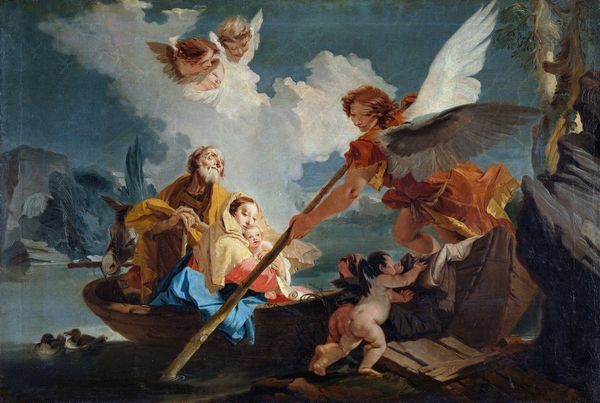
painting, oil-paint
#
allegories
#
allegory
#
baroque
#
symbol
#
painting
#
oil-paint
#
figuration
#
oil painting
#
history-painting
Dimensions: 299 x 379 cm
Copyright: Public domain
Editor: This is Giovanni Battista Tiepolo's oil painting, "The Triumph of Fortitude and Sapiency," created around 1750. It's immediately striking – a whirl of figures, light, and dark, locked in dynamic opposition. What do you see in this piece beyond the obvious allegorical triumph? Curator: Beyond the surface spectacle, I see a carefully constructed narrative deeply embedded in the power structures of its time. Tiepolo presents Fortitude and Sapiency as conquering forces, but we need to consider whose fortitude, whose sapiency, is being celebrated, and at whose expense. What does it mean to depict virtues as triumphal in an era rife with social and political inequality? Editor: That's a good point. I was so caught up in the aesthetics I hadn't thought about the inherent politics. The fallen figures certainly look… oppressed. Curator: Precisely! Consider the vanquished figures at the bottom. They're being crushed under the weight of these "virtues." We might read them as representations of ignorance, vice, or chaos, framed from a decidedly elite perspective. Doesn’t it prompt questions about who gets to define "virtue" and who is labeled as its opposite? Editor: So, the painting isn't just a celebration, but a statement, possibly even a defense of the status quo. Were viewers at the time meant to accept this power dynamic without question? Curator: That's precisely the kind of critical inquiry we need. It's unlikely all viewers were passive recipients. Perhaps some questioned the very ideals being presented. How might contemporary audiences, more attuned to issues of social justice, interpret such a work? Editor: I see this painting with new eyes now. It's not just about the triumph of good over evil; it’s a reflection of societal power dynamics encoded in art. Thanks! Curator: My pleasure. It reminds us that even the most beautiful art can be a site of complex ideological negotiations. Keep questioning.
Comments
No comments
Be the first to comment and join the conversation on the ultimate creative platform.
